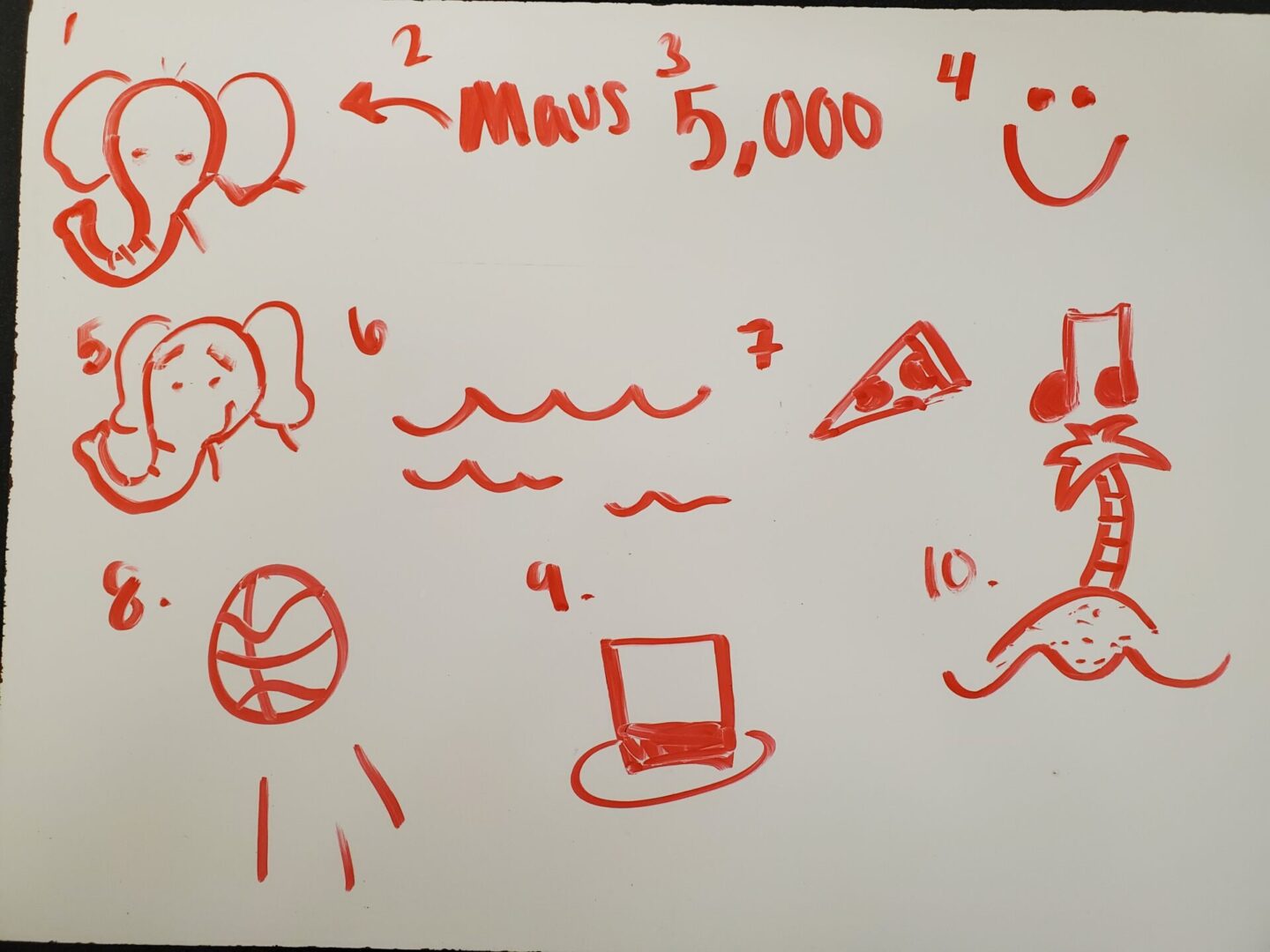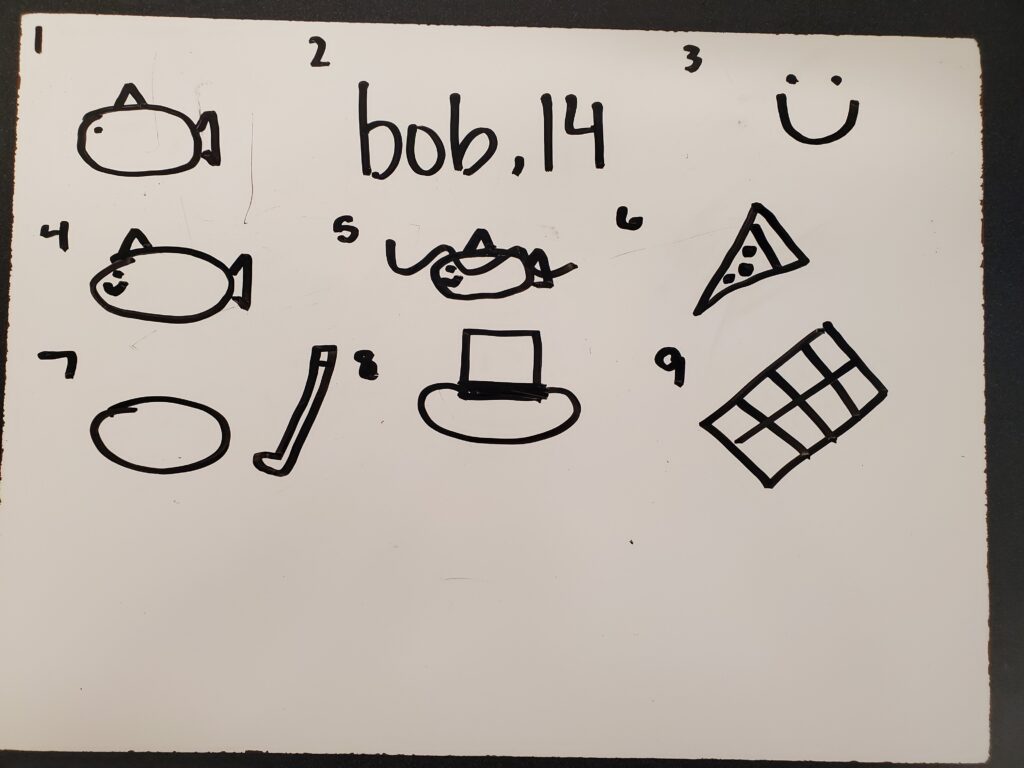Personalization through Drawing Details (and Retells)

Personalization through Drawing Details (and Retells)
This activity is an excellent way to personalize a text/story and give students ownership of it. In this activity, students are not only supported in their engagement with the language, but they also get the benefits of repetition of the vocabulary and structures. What is more, they even get the benefits of drawing, including memory retention, focus and creativity. (Find out more about the benefits of drawing in class here: Drawing a Beneficial Conclusion)
To Start:
I created a slide with the short story on it. On the slide, I left blanks where the students will fill/draw in their own detail. (Note: depending on the length, you can put it on slide or divide it between multiple slides.)
For example:
- Es gibt ein _____ . (insert animal – Katze, Hund, Fisch) – There is a _____. (insert animal)
- Er / Sie heißt _____. – Write name down!
- Er / Sie ist _____ Jahre alt. – Write number down! – S/he is ____ years old.
- Er / Sie ist ____. (froh / traurig / müde / …) – S/he is _____ (happy, sad, tired, etc.)
- Er / Sie wohnt in ______. – S/he lives in _____.
- Er / Sie mag _____ und ______. – S/he likes ____ and ____.
- Er / Sie spielt ______. – S/he plays _____.
- Er / Sie hat ______. – S/he has _____.
- Aber Er / Sie will _____. – But s/he wants ________.
In Class:
1. Students had a whiteboard, marker, and rag/eraser.
2. I explained that they would read a story and there would be blanks in the story. (There was a missing detail.) I then told them that they would have to draw the detail (on their board), unless it specified to write a word/number.
3. I projected the slide with the story and structures and I read it aloud (in German) to the class as they followed along.
4. After I read a sentence, I gave them time to draw (or fill-in) their detail on the whiteboard. I also asked if there were any words which they did not know, so that we could establish meaning.
5. After going through each sentence, I gave students a couple of minutes to finalize any illustrations on their whiteboards and prepare for to retell the story using their details.
6. I then had students show me their drawings / details by holding up their boards. I looked at their whiteboard pictures as a comprehension check.
7. Then, I told the class to show another person their whiteboard picture and retell – in German – the story with their details.
- Note: I asked them to point to what they had drawn (or filled in) as they retold the story.
8. Then, we repeated step seven a couple of times with different partners. (The students enjoyed sharing their work and seeing the work of others.)
- Note: You can leave the story projected if the students need more support, or you can turn off the slide.
9. I also drew on a whiteboard. After step 8, I held mine up and retold the story using my details.
- Note: As we went, I had them try and guess my drawings, before I told them what it was. This was a fun way to circle the structures and get repetition through a “guessing game”. (I’m pretty sure the students had fun picking on my drawing skills – all in good fun though!)
10. Lastly, I offered any students the chance to come up in front of the class and retell the story – in German – with the details on their board. (I don’t force students to do this!)
Reflections:
My students enjoy this activity. There tends to be a lot of “buy in” with this activity, because the students get to personalize it and take ownership of it. That is, they get to make the story their own – and this can be a good motivator in the classroom! (Plus, they like the drawing part of it also.)
I also feel that students acquire much from doing this activity. There is a lot of exposure and repetition with the structures and vocabulary. The students are only changing the detail, but the structures remain the same. (S/he likes ___. / S/he has ___. / Etc.) Plus, they got repetition through different aspects of communication and language: reading, listening and speaking.
Note: Here is a pictures from one my students with their details. (This is from a beginning German 1 class.) The story went like this:
There is a dog. His name is Bongo. He is 4 years old. He is doing well. He is happy. He lives in a (dog)house in Paris. He likes Milk Bone (treats) and to play. He plays frisbee and drums. He has a (dog)house and skateboard, but he wants a sweater.

Below is another example of the same story. Notice the details are different, but the structures are the same!
There is a fish. His name is Bob. He is 14 years old. He is doing well. He is happy. He lives in the ocean. He likes pizza. He plays hockey. He has a hat, but he wants (a bar of) chocolate.
